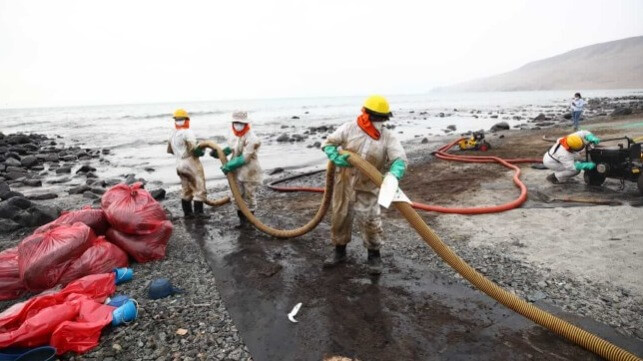Oil Spill Off Peru Was Twice as Large as Previously Believed

The oil spill at a loading buoy off the coast of Lima, Peru on January 15 was twice as large as previously believed, the nation's environment ministry reported Friday.
The spill occurred on the same day that unusually powerful wave action - driven by the volcanic eruption and tsunami event in Tonga - struck the coast of Peru. At the time of the incident, the Suezmax tanker Mare Doricum was unloading a shipment of Brazilian crude oil at one of the La Pampilla refinery's offshore mooring buoys, and a quantity of the cargo was released. The spill has coated miles of beaches near the nation's capital, as well as the shores of an environmentally-sensitive marine reserve and a seabird sanctuary.
According to Environment Minister Ruben Ramirez, the Peruvian government now believes that the spill released nearly 12,000 barrels of oil into the sea, up from an initial estimate of 6,000 barrels. The ministry estimates that about one-third of the total has been recovered in cleanup efforts so far.
In a statement, refinery operator Repsol put the number somewhat lower than the latest government estimate, calculating the amount at about 10,400 barrels.
"Information on the true number of barrels of oil spilled in Ventanilla ratifies ecocide and reveals Repsol's lack of transparency," said Foreign Minister Óscar Maurtua in a statement Saturday. "[The] government will announce drastic sanctions."
The tanker Mare Doricum has finished unloading her cargo, but she is still detained while the investigation into the circumstances of the spill continues. Her operator asserts that the release of petroleum came from a pipeline leak, and that the vessel bears no responsibility.
